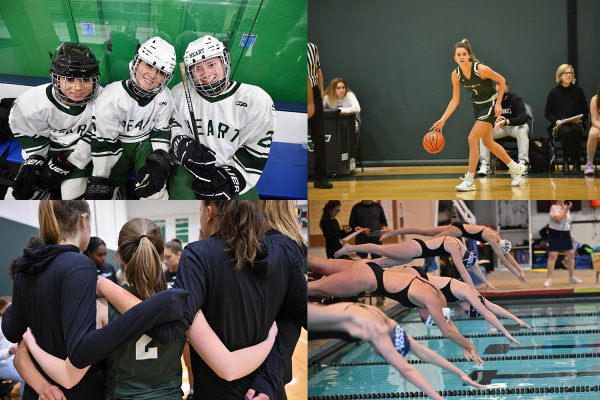Academic anxiety: where to draw the line between helpful and harmful
From academics, to athletics, to community service, Convent of the Sacred Heart students are constantly hustling to the next activity. Yet, there is a distinction between healthy and excessive stress levels. Finding a balance between the two sustains a healthy mentality and heightens academic performance.
According to lsc.cornell.edu, there is a direct correlation between students’ levels of anxiety and levels of performance. Demonstrating little anxiety or having an excess causes a break in concentration, which leads to lower academic performance. Cornell University’s research asserts that a manageable amount of pressure improves performance.

“Distress is the stress that most people are familiar with – this is the unpleasant experience we have when we feel overwhelmed. Eustress, on the other hand, is the good kind of stress. Eustress can actually help improve our performance, whereas distress usually has a negative impact,” School Psychologist Dr. Melissa Otero said.
One such negative impact is a decrease in sleep. Assistant director of the Laurel Center for Research on Girls (CRG) Dr. Tori S. Cordiano found that only 20 percent of ninth through twelfth-grade students receive sufficient amounts of sleep, according to laurelschool.org. The report states that over the past 20 years, young girls have been steadily losing sleep due to distress.
Dr. Cordiano explains that sleep refreshes mental awareness and that continuous instances of sleep deprivation weaken students’ ability to focus in school.
Only two percent of 213 Sacred Heart Upper School students report following Dr. Cordaino’s recommendation of nine to ten hours a night, while 55 percent of students sleep for six or fewer hours a night.

Daisy Steinthal ’19
CRG also found that the relationship between stress and sleep creates a vicious cycle. Students under stress are more susceptible to sleep deprivation that builds over subsequent nights. Consequently, adolescents who sleep less than nine hours a night are more likely than those who receive adequate sleep to report anxiety and depression.
With this information in mind, Sacred Heart teachers attempt to compromise with their students about workload and scheduling. Upper School Theology and History Teacher Mr. Dan Favata allows his Advanced Placement Art History students to vote on their test dates and, also, gives all of his students multiple weeks advance notice on all assessments.
“Every student is different; some students thrive under stress and some don’t, but there is a difference between stress and fatigue. When students are fatigued and tired, they can’t think the great thoughts,” Mr. Favata said.
Although Sacred Heart teachers take their students’ workloads into consideration, 68 percent of 213 Upper School students report spending four or more hours a night on homework. In comparison, the average American high schooler invests an average three hours per night completing homework, according to CNN.

Daisy Steinthal ’19
Even though some students report feeling overwhelmed by the amount of work, others acknowledge and value their opportunities to develop a strong intellectual foundation.
“Although the schoolwork is difficult and the emphasis on Goal Two of Sacred Heart’s Goals and Criteria places high academic expectations upon students, I respect and appreciate the school’s goal of creating well-rounded students who have the skill set to create global change,” sophomore Meredith Wilson said.










